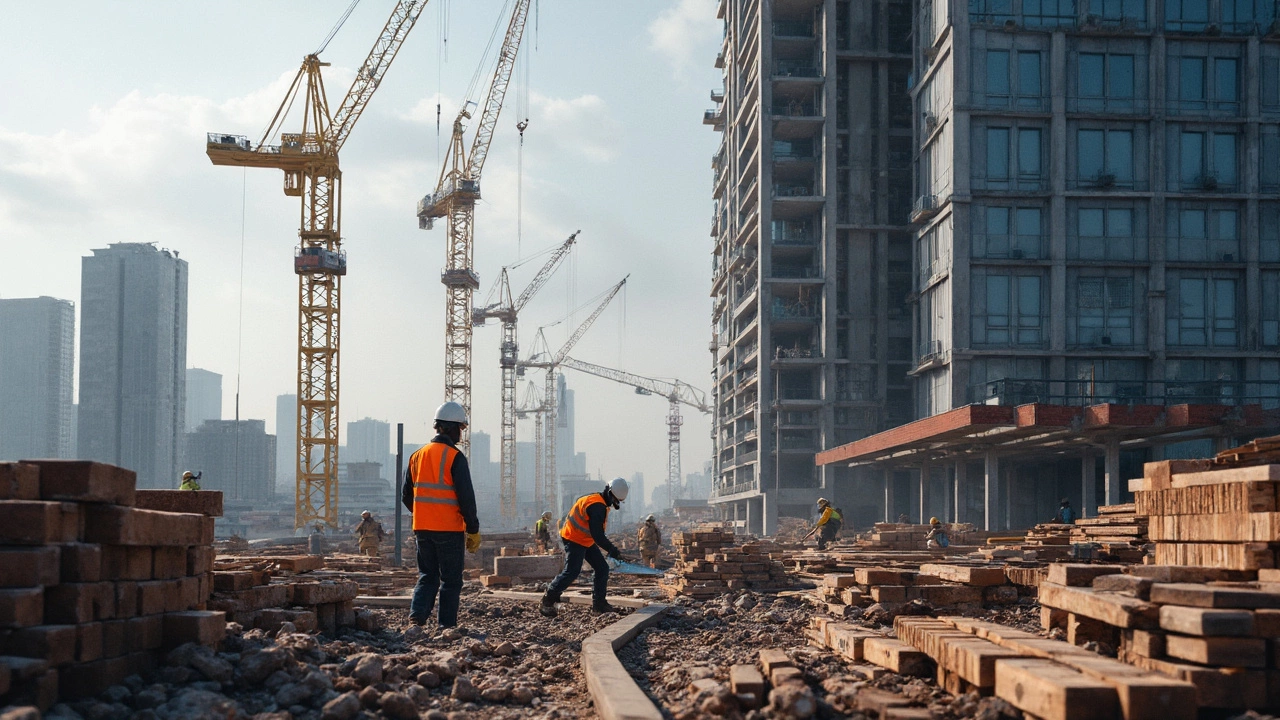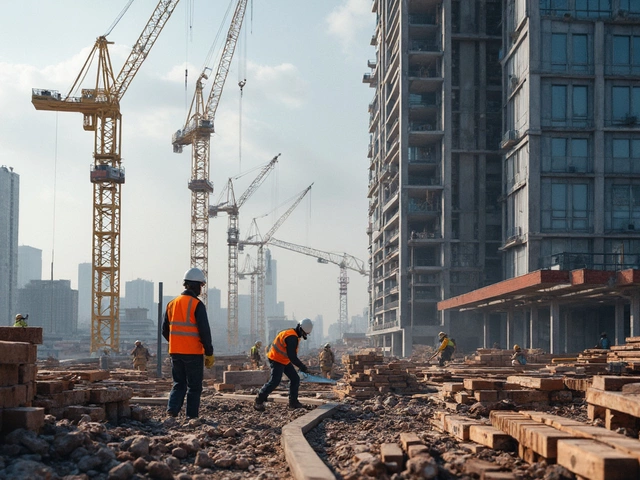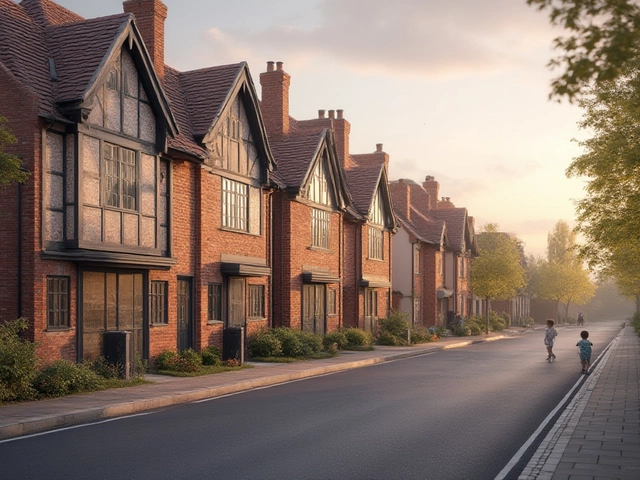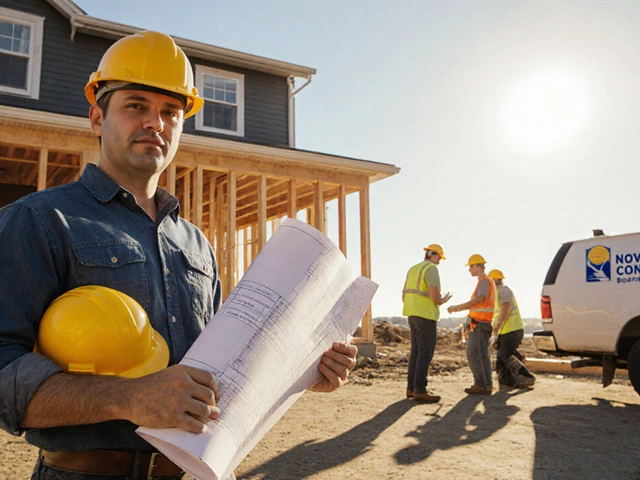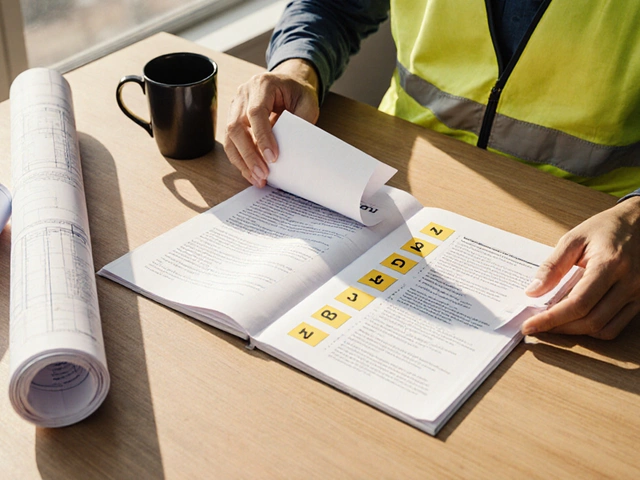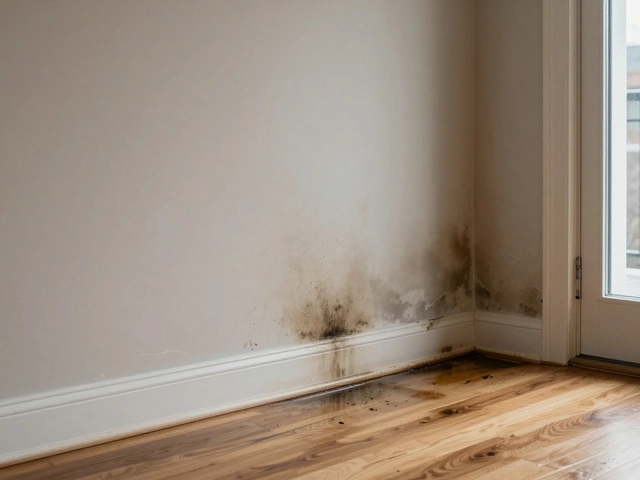Ever wondered what's behind those towering skyscrapers or even the cozy wooden cabins? It's fascinating really, because it all starts with the basic raw materials. Let's break it down a bit. You see, each time a construction project kicks off, folks dive into a toolkit loaded with essential materials like concrete, steel, wood, and bricks. These aren't just random picks from a shelf—they're the backbone of pretty much every structure out there.
So, let's talk concrete first. It's the stuff that literally forms the foundation of many buildings. Mix a bit of cement, sand, gravel, and water, and you've got yourself a material that can withstand almost anything nature throws at it. That's why it's everywhere! Then, you've got steel, the muscle of the operation, providing the necessary strength to withstand tension and pressure. Without it, those bridges wouldn't be standing so tall.
- Concrete: The Building Block of Modern Construction
- Steel: Strength and Versatility
- Wood: The Natural Choice
- Bricks: The Timeless Staple
- Sustainable Alternatives: Going Green
Concrete: The Building Block of Modern Construction
Concrete is the unsung hero you see literally everywhere in the construction world. It's made of a mix called a construction material blend, featuring cement, water, sand, and gravel. This mix forms a robust paste when it dries. One of the coolest things about concrete is its flexibility; not like, bendy-flexible, but adaptable to any shape you mold it into before it hardens.
Ever heard of the Romans and their jaw-dropping architecture? They were mixing up concrete to build everything from aqueducts to the Colosseum. Today, concrete makes up about 70% of skyscrapers' weight and provides the foundation for virtually all modern building supplies. Not just taking credit for strong buildings, it's also cost-effective. That's why it's everywhere!
Concrete doesn't work alone, though. It teams up with steel to create reinforced concrete, which is super strong and great for withstanding heavy loads. This dynamic duo helps keep bridges and multi-story buildings standing firm even during quakes.
Here’s a fun fact: concrete is great for insulation. It can absorb and retain heat during the day and release it at night, helping maintain a comfy temperature in the building.
| Material | Percentage in Concrete |
|---|---|
| Cement | 10-15% |
| Water | 15-20% |
| Sand & Gravel | 60-75% |
So, next time you walk by a towering skyscraper or cross a bridge, remember it all started with this incredible construction material that’s been rocking the world since ancient times.
Steel: Strength and Versatility
When you think of tough, long-lasting construction materials, steel probably jumps to mind. It's a champ in the building world and for good reason. This material is all about strength and versatility, making it a staple in modern construction. Ever notice those gleaming skyscrapers or robust bridges? Yeah, that's steel doing its thing.
What makes steel special is its ability to hold up under immense pressure. It can stretch and bend without breaking, which is a big deal when it comes to withstanding wind, earthquakes, or heavy loads. This is why engineers love using steel for structures that need to reach high into the sky or span vast distances.
Now, let's chat about flexibility. Steel can be molded into pretty much any shape, making it useful for more than just the bone structure of buildings. It's in everything from reinforcements to recreational spaces. Want to create an open floor plan without obtrusive walls? Steel's your go-to.
Another neat thing about steel is its sustainability factor. Did you know it’s completely recyclable? Yep, almost all steel products in construction can be melted down and reused over and over, reducing waste and conserving raw materials.
| Steel Usage | % in Construction |
|---|---|
| Structural Frameworks | 50% |
| Reinforcements | 30% |
| Other Uses (tools, appliances) | 20% |
Above all, the cost-effectiveness of steel can't be overstated. It saves money in the long run through durability and reduced maintenance. So, when tackling any big project, considering steel is usually a smart move both for functionality and cost.
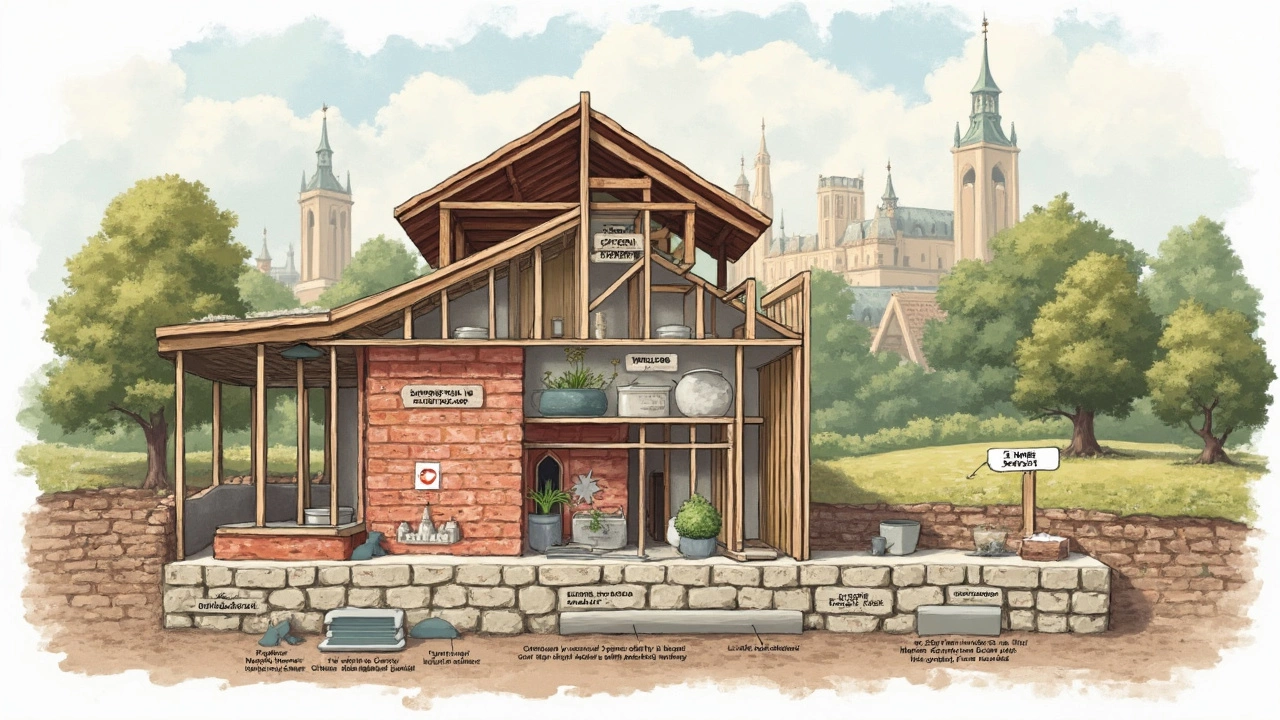
Wood: The Natural Choice
When it comes to construction materials, wood has been holding its ground as a favorite for ages, and not just because it looks nice. There's something special about using this natural material that’s not only renewable but also versatile and incredibly easy to work with. Thinking of building something that breathes? Wood’s got your back.
Now, you might think, “Why wood when we have concrete and steel?” The answer lies in wood's unique properties. It’s a great insulator, making it perfect for keeping homes cozy in the cold Canadian winters (trust me, I know!). Plus, it’s pretty lightweight compared to steel, cutting down on transportation costs and the overall carbon footprint. It bends under pressure, literally, which means it can absorb shock and stress—ideal for earthquake-prone areas.
Not all wood is created equal, though. You've got softwoods and hardwoods. Softwoods, like pine and spruce, grow faster and are easy to cut, making them a common choice for frames and beams. Hardwoods, such as oak and maple, are denser and tougher, often used where durability and longevity are needed, like in flooring or high-traffic areas.
Getting into sustainability, wood wins big points. It’s renewable, as long as we’re responsible about logging practices. Check out an interesting stat here:
| Material | Embodied Energy (MJ/kg) | Carbon Footprint (kg CO2/kg) |
|---|---|---|
| Concrete | 1.1 | 0.08 |
| Steel | 32 | 1.85 |
| Wood | 2 | -0.9 |
Notice something? Wood actually has a negative carbon footprint when sustainably harvested, meaning it can help reduce the overall carbon flurry. Pretty neat, huh? It’s like planting trees and building houses all at once.
Sure, wood isn’t perfect. It’s got its quirks, like being prone to rot if not treated properly or being less fire-resistant than other materials. But with advancements in treatment techniques and fire safety, wood can be a safe and reliable choice. So if you’re thinking materials for your next big project and eco-friendliness is on your checklist, keep wood in mind. It’s stood the test of time for a reason!
Bricks: The Timeless Staple
When it comes to enduring materials in construction, bricks have to take the crown. They've been around for thousands of years, forming the charming facades of ancient structures and modern homes alike. What makes bricks so appealing? For starters, their ability to withstand the test of time and weather is nothing short of legendary. From the ancient Indus Valley Civilization to Roman architecture, bricks have literally built history.
Bricks are mostly made from clay that gets fired at high temperatures. This process makes them super durable. Plus, they come in all sorts of sizes and textures, making them a favorite for architects who want both function and flair. They're also great insulators, which means they help in keeping homes warm in winter and cool in summer—pretty handy for energy efficiency, right?
One interesting thing about brick is its color variation. That natural, earthy hue is not just from the clay but from mineral content and firing temperatures as well. This adds a layer of uniqueness to every piece. Pretty cool, huh?
Another perk of using bricks? They're low maintenance and resistant to pests. Unlike wood, you won't be dealing with termites. And in a place with changing weather like Halifax, that's a huge plus!
Lastly, as trends move towards more eco-friendly building materials, bricks still hold their ground. They're often recycled or salvaged from demolished buildings and reused, reducing waste and making old things new again.

Sustainable Alternatives: Going Green
With an increasing focus on eco-friendly practices, the world of construction materials is seeing a shift toward green options. It's not just a trend; it's becoming a necessity given the environmental challenges we face today. So, what are some of the popular sustainable alternatives making waves in construction?
First up, there's bamboo. This material is not just for fancy furniture; it's becoming a genuine option for structural elements, especially because it grows like a weed—fast and plentiful. Plus, it's strong and lightweight, making it ideal for various construction needs. Builders love it for its renewability.
Recycled plastic is another up-and-comer. Imagine all those plastic bottles and waste being repurposed into bricks or even piping. It's a pretty neat two-birds-one-stone approach—using up waste and cutting down on new resource extraction. This way, you get a durable and lighter option that's surprisingly robust.
Then there are the materials like hempcrete, a mix of hemp and lime, which offers excellent insulation properties and is super easy to work with. It's not just sustainable but also helps in carbon sequestering, literally sucking up carbon as it hardens.
Check out these stats for a bit more insight:
| Material | Carbon Footprint Reduction |
|---|---|
| Bamboo | 50% |
| Recycled Plastic | 40% |
| Hempcrete | 60% |
Of course, the choices you make in building supplies can seriously impact the environment and building performance. It makes sense to look at these sustainable options not just as alternatives but as the future of construction. And honestly, who wouldn't want to boast about their eco-friendly home?
